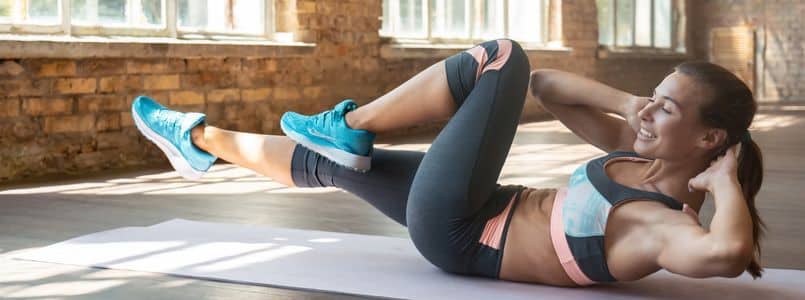Activity Trackers Can Increase Workout and Help Lose Weight, New Study Finds

It is common knowledge that physical activity is essential for general well-being (
Individuals concerned about their lack of physical activity try many options to become more active. One of such options includes using wearable and fitness trackers that are advertised to keep users accountable and motivated to exercise more.
There’s a lot of skepticism about the effectiveness of these trackers. To find out if they really work, a group of Australian researchers reviewed published studies involving people using wearable activity trackers (WATs) to monitor their physical activity (
The researchers declared that the study was not sponsored by any fitness tracker company.
Overview of the Systematic Study
A systematic study is a review of studies that uses all available evidence to answer a specific research question (
This systematic study aimed to evaluate the effectiveness of activity trackers for improving physical activity. In addition, physiological (blood pressure, glycosylated hemoglobin, cholesterol) and psychosocial (quality of life and pain) outcomes were also investigated.
Researchers reviewed published papers involving people using WATs to track their physical activity from seven databases – Embase, MEDLINE, Ovid Emcare, Scopus, SPORTDiscus, the Cochrane Library, and Web of Science. Each paper was screened by 2 of 8 independent reviewers. Ultimately, 390 studies involving 163,992 participants were chosen for the systematic study.
The published studies by the researchers had different metrics of physical activity ranging from step counts, walking, moderate-to-vigorous physical activity [MVPA], and physical activity energy expenditure.
Result of the Study

At the end of the study, researchers found that activity trackers encouraged people to be more active. It is estimated that users of WATs became more active by taking an extra 1800 steps per day, which translates to about 40 mins of walking per day. MVPA was estimated to increase by about 6 mins per day. This increased workout resulted in approximately 2.2 pounds of weight loss.
The effects of WATs on psychological and psychosocial outcomes were positive, with improvements in blood pressure, cholesterol, and glycosylated hemoglobin. However, the results were found to be typically small and often non-significant.
Conclusions That Can be Drawn From the Study
The systematic study confirms what we already know – that regular exercise is beneficial. As per the 2008 Physical Activity Guidelines for Americans, adults need at least 150 minutes (2 hours and 30 minutes) a week of moderate-intensity or 75 minutes (1 hour and 15 minutes) a week of vigorous-intensity aerobic for substantial health benefits (
However, the extra 1800 steps (40 mins of walking) brought about by using WATs is significant in a world where physical inactivity is a pandemic. Some physical activity is always better than none, and anyone who engages in any amount of exercise will see some health benefits, as seen in the systematic study.
The weight loss observed in the research (2.2 pounds) is also significant in the general population as it can help shed some weight most people gain over time. Overweight and obese people, who usually have exercise as part of their weight loss strategy, will need to exercise more to lose weight. And using WATs is bound to inspire them to reach their exercise goals and shed excess weight.
How much should the average adult exercise every day?
The recommended amount of exercise an adult needs has been mentioned above. About 30 minutes of moderate physical activity daily is enough for most people. However, individuals intending to lose weight or meet specific fitness goals may need to exercise more. Moderate aerobic exercises include brisk walking, swimming, biking, and even mowing the lawn.
Vigorous aerobic exercise (running, heavy yard work, and aerobic dancing) and strength training (using weight machines, rock climbing, and so on) are also beneficial if you can fit them in your schedule. However, moderate physical and aerobic exercises are more achievable for most people.
In addition to becoming more active, reducing sitting time is crucial (
Benefits of Physical Activity
There are several benefits of being active, including improved brain health, reduced risk of disease, weight loss, better weight management, and stronger bones and muscles (
Stress levels also decrease with regular workouts. The quality of sleep increases as well as self-esteem and self-confidence. Thus, individuals of all ages need to be active. However, the level of physical activity should be appropriate for their ages.
1. Centers for Disease Control and Prevention. Benefits of Physical Activity.
2. Physopedia. Barriers to Physical Activity.
3. Ferguson T, Olds T, Curtis R, Blake H, Crozier AJ, Dankiw K, Dumuid D, Kasai D, O’Connor E, Virgara R, Maher C. Effectiveness of wearable activity trackers to increase physical activity and improve health: a systematic review of systematic reviews and meta-analyses. Lancet Digit Health. 2022 Aug;4(8):e615-e626. doi: 10.1016/S2589-7500(22)00111-X. PMID: 35868813.
4. University Libraries. Systematic Reviews & Other Review Types.
5. Home of the Office of Disease Prevention and Health Promotion. (2008) 2008 Physical Activity Guidelines for Americans.
6. Laskowski E. Adult Health.
7. Walden University. 5 Mental Benefits of Exercise.
Did you like the article?
Subscribe to our weekly newsletter and get our best weight loss tips straight to your inbox!
